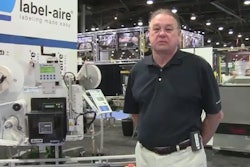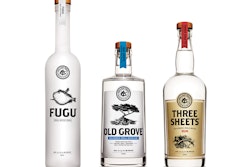
As of this writing, 9mm Vodka is a feature on www.Indiegogo.com, a crowdfunding site. Crowdfunding is a platform through which promoters seek donations from supporters of a given concept, cause, or product. Although 9mm Vodka has yet to be commercialized, critiquing it beforehand is not jumping the gun. That’s because there are a variety of issues that vodka in a gun-shaped bottle brings to bear.
If 9mm Vodka ever gets launched, there will be an awaiting firing squad, arguing that the product promotes mixing booze and bullets, alcohol and ammo, in a time when gun violence is a societal cancer. It’s a tenuous argument; besides, research on what glorifies guns cite (among others) such cultural mainstays as television, movies, video games, and rap lyrics—but packaging consistently has been absent from the list. And assuming that those who would put 9mm Vodka in their crosshairs aren’t advocating a return to Prohibition, their argument comes down to this: It’s not the contents, per se, that are objectionable, but rather the packaging.
That argument should give concern to anyone whose career is even tangentially associated with packaging, for it raises the following question: What defines socially-responsible packaging? The discipline has embraced sustainability as a component of that definition; however, there are would-be components that are more subjective and debatable.
One is that of size, as exampled by the so-called jumbo bottles of malt liquor, criticized for facilitating intoxication. Whatever substance there might be to such criticism, someone determined to consume a certain amount can do so by way of however many containers, of whatever sizes, are necessary to achieve the goal. Then there’s the example of sugary beverages banned from vending machines in a multitude of schools, the objective being to protect children from dietary harm by blocking access. Here, packaging is the culprit of sorts because of its key role in product placement. The noble intentions of those behind the ban, notwithstanding, children have other means of consumption, whether at home or away, including bringing the product to school in their lunch packs.
By whatever metric, consumer packaged goods differ as to how socially redeeming they are. But when the decision is made to market a product, it’s packaging’s role to provide protection, communication, and convenience, in a combination that contributes to brand strength and consumer loyalty. The various watchdogs, crusaders, police—call them what you will—also have their roles; however, those roles are not best fulfilled when disproportionate blame is heaped on the packaging if the perceived problem resides more with the contents. That’s not to deny that some packaging invites criticism. An example is a wine branded after a cartoon character that’s wildly popular with children (starting with toddlers). The character not only is prominently featured on the pink label but also hangs on a chain draped around the neck of the bottle. Is this a wink and a nod to underage female drinking?
Steering the conversation back to 9mm Vodka, its inventor, Jim Denoon, pays homage to the marketing prowess of packaging. On the Indiegogo website, he explains that his inspiration for vodka in a gun-shaped bottle derived from his conclusion that the spirits market was characterized by, “non-descript packaging.” His is an interesting conclusion and at odds with various industry reports that proclaim that the vodka segment has the spirits industry in high spirits, powered by the leveraging of innovative (including award-winning) package design. Differences of opinion aside, Denoon likely agrees with reports that, in general, vodka drinkers can’t blindly distinguish among the tastes of the unflavored offerings and base their purchasing on the branding and the packaging. Incidentally, in ranking the importance of branding and packaging, Denoon describes packaging as, “the star of the show.”
Using the phrase, Ready, Aim, Fire, to represent research, targeting, and launch, respectively, maybe Denoon demonstrates poor marksmanship in that all-important first step. Despite Denoon’s claim of having developed, “one of the most radical packagings (sic) ever seen in the vodka category,” there already are spirits marketed in gun-shaped bottles. There is a brand of tequila that comes in a bottle in the shape of a handgun. And there’s AK 47 Vodka, so named because its bottle is shaped like that model of assault rifle. Then again, maybe Denoon knows about other spirits in gun-shaped bottles and is relying on variables other than strict uniqueness. If Denoon plans to market the product online as a collector’s item (which is how AK 47 Vodka is marketed) his thinking might be that there are those who collect a variety of guns, so why rule out the possibility of there being those who collect a variety of gun-shaped bottles.
It’s not just the bottle that makes up the packaging of 9mm Vodka. The bottle comes with four shot glasses (Denoon’s intended play on words) in the shape of ammo clips. The bottle and glasses are nestled individually in cutouts, inside a polyurethane liner, all housed in an aluminum flight case. As a final touch, the case is enrobed in a sleeve that sports brand copy. That gives new meaning to the term, “packing,” especially since the bottle only holds 500 mL. It’s unlikely that Denoon is envisioning any awards for sustainability. By the way, 9mm Vodka isn’t unique in its packaging excesses; for AK 47 Vodka comes in a wood case with shot glass, cutout, and dog tags, no less.
Flavored vodka is a trend within the segment, with marketers using exotic flavors to differentiate their products. And as with other instances of product line extensions, packaging has the role of tying the line together, even as it distinguishes among the individual varieties. There’s little doubt that the category, as a whole, will witness a parade of designs that push the envelope in a variety of ways.
So I lift my glass in salute to Denoon for assigning packaging such a central role in his venture; nonetheless, I doubt that his venture will be successful, mainly because of the clock. At the time of this writing, Indigegogo lists him as having raised $5,824 of the targeted $45,000 (that Denoon says is the minimum he needs to commercialize the product), with only 16 days left to be featured on the site. Of course, I could be wrong, and if someday soon I learn that 9mm Vodka is available for purchase, I’ll be left to exclaim, “Son-of-a gun!”
Sterling Anthony is a consultant, specializing in the strategic use of marketing, logistics, and packaging. His contact information is: 100 Renaissance Center- P.O. Box 43176; Detroit, MI 48243; 313-531-1875 office; 313-531-1972 fax; [email protected]; www.pkgconsultant.com


























